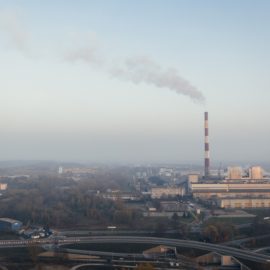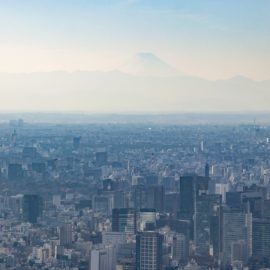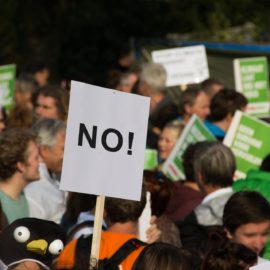
A Louisiana judge found for the citizens and not the polluter. Will this be good or bad in the long run?
In tossing out an air pollution permit for a massive plastics plant, a Louisiana judge handed a major win to activists who have argued that the state does not do enough to prevent the burden of pollution from falling mostly on minority communities. But it remains to be seen what the ruling from Judge Trudy White, who has already been overturned on appeal once in this case, will mean for the future of the controversial, $9.4 billion Formosa Plastics complex — and whether her decision will ultimately change anything about how Louisiana regulates pollution. White’s ruling, which ordered the state Department of Environmental Quality to start from scratch on a key air permit for Formosa, was deeply rooted in the history of the rural parishes along the Mississippi River. She invoked the area’s slave plantation past, and quoted a plaintiff from the small, majority-black town of Welcome in St. James Parish who referred to the “sacred lands” that have been passed down for generations. “The spirit of those words to Sharon Lavigne and the other Welcome residents, is that the blood, sweat and tears of their Ancestors is tied to the land,” White, of the 19th Judicial District, wrote in the preface to her scathing, 34-page ruling.
nola.com
The LDEQ was taken to task for not doing their job or following the mandate of their mission.
White blasted state regulators, saying their cursory review failed to constitute the mandatory environmental justice analysis that would have rigorously studied whether pollution from the plant would disproportionately affect Black and other minority communities. Without that evidence, DEQ tried to improperly explain away or ignore findings from air modeling and other data that showed nearby residents could be exposed to toxic carcinogens and pollutants, she wrote. “It is clear from the record, briefing, and oral argument that disproportionality and environmental justice issues are at the heart of this case,” White wrote in the ruling, which was signed Sept. 8. White wrote that DEQ did not live up to its own definition of environmental justice — that no group of people should bear a disproportionate negative impact from industry. “LDEQ’s definition of ‘fair treatment’ requires more of the agency than mere lip service or opportunities for public involvement,” White wrote, referencing a seminal state Supreme Court case on the agency’s public trust duty. “Rather, it demands ‘active and affirmative protection.'” White put “active and affirmative protection” in bold type.
THis is the first time a judge has ruled for the citizens and may be a harbinger of things to come. Or not.
Lawyers who have been fighting to stop the Formosa project said White’s ruling could have a seminal impact on environmental regulation because it represents the first time a Louisiana state court or court panel has reversed a DEQ permit decision on environmental justice grounds. Devin Lowell, clinical assistant professor of law and supervising attorney at Tulane Environmental Law Clinic, said he hopes it prompts DEQ to develop a procedure to review environmental justice concerns in the future. “I think the ruling makes clear that, at a minimum, that procedure needs to include meaningful involvement of the communities affected, and an intentional examination of the disproportionate burden of air pollution on those communities, rather than the hodgepodge, result-driven approach DEQ took with Formosa,” Lowell said in an email. Environmental advocates and some local community groups said the ruling vindicated their criticism that Formosa and the state were turning a blind eye to racial and environmental injustice. “Stopping Formosa Plastics has been a fight for our lives, and today David has toppled Goliath,” said Sharon Lavigne, founder and president of RISE St. James, a community group that opposes the project.
The company says they met all the hoops and the decision was flawed.
Officials with FG LA, the local Formosa affiliate behind the plant, said they respectfully disagreed with White’s conclusions. They said that DEQ found the Sunshine Project met all state and federal standards to protect the public and the environment with a margin of safety. “We believe the permits issued to FG by LDEQ are sound and the agency properly performed its duty to protect the environment in the issuance of those air permits,” FG officials said in a statement. FG officials said they intend “to explore all legal options in light of Judge White’s ruling as the project continues to pursue successful permitting.”
The Formosa plant has been scrutinized in more ways.
The air permit decision is only the latest regulatory headwind the complex has faced. Last year, the U.S. Army Corps of Engineers opened a more than two-year-long review of the project after suspending earlier permits for the project over environmental justice grounds. Ricky Boyett, spokesman for the U.S. Army Corps of Engineers in New Orleans, said the review remains in the early stages and is currently “in a hold” because FG LA hasn’t “initiated the review.” Greg Langley, DEQ spokesman, declined on Wednesday to comment about the ruling, saying the department would review it and decide on next steps.
Formosa is a favored entity as they bring jobs and taxes. Favored never includes human costs.
Democratic Gov. John Bel Edwards and local officials have viewed the Formosa complex as a major economic development win for the region and state. If built, the plastics plant would create 1,200 permanent jobs, thousands more temporary construction jobs, tens of millions of dollars per year in state and local taxes, and millions more in spinoff benefits once built. But the huge operation needed 15 air permits, allowing it to emit more than 800 tons of toxic pollutants, nearly 6,500 tons of other pollutants known to cause ground-level ozone and respiratory ailments, and more than 13.6 million tons of greenhouse gases annually. Critics contend it would be one of the biggest plastics facilities in the nation. They claim its climate change-inducing emissions would be the equivalent of 3.5 coal-fired power plants. The complex would be built on 2,400 acres of farm and swamp just southwest of the Sunshine Bridge, taking advantage of a prime Mississippi River site when the oil and gas industry increasingly looks to plastics and other chemical production as important growth markets.
Local politics have also been making news especially when the UN got involved.
But the plant has also roiled politics in St. James Parish for the past several years. Along with the Bayou Bridge Pipeline a few years beforehand, it has sparked a revival in environmental activism in the parish that has drawn national attention and even the interest of the United Nations. A coalition of local community organizations and environmental groups, including Rise St. James, Louisiana Bucket Brigade and Healthy Gulf, have made Formosa the poster child for what they see as environmental injustice in the river parishes. Backed by Earthjustice and others, they sued in February 2020 to block the permits awarded a month earlier by DEQ. Tulane law later joined the case representing another St. James resident.
There have also been judicial actions where decision have been overruled.
In November 2020, White ordered DEQ to do a more robust environmental justice analysis, but the Louisiana 1st Circuit Court of Appeal ruled in the following March that White was premature and had abused her discretion as judge. The appellate court sent the case back down to White for arguments in March 2022 arguments, which led to the ruling on Sept. 8. White’s Baton Rouge-based 19th Judicial District Court is the venue for state challenges to DEQ actions. Lowell, the Tulane professor, called the ruling “a big victory for environmental justice in Louisiana.” “(It’s) really what we’ve been saying all along and what the community has been saying all along, that they improperly dismissed the community’s concerns about the sort of disproportionate burden of air pollution in that part of St. James Parish,” Lowell said.
What is the process that LDEQ uses and what assumptions do the make?
While White’s ruling centered on environmental justice, she also drilled into technical questions about the assumptions DEQ made in granting the permit. For instance, Formosa’s air modeling shows that levels of ethylene oxide, a potent cancer-causing chemical, could exceed levels federal regulators have deemed unsafe for lifetime exposure outside the plant boundaries. But Louisiana’s standards are 50 times less protective than the federal standard because the state standards are old and don’t take into account recent findings about ethylene oxide’s increased cancer causing potential, White said. The boundary of the area that would have the elevated levels of chemicals is just shy of an elementary school and some homes. “You know DEQ relies on the (ethylene oxide) line like it’s the gospel in its decision. It’s like here’s the line. The line doesn’t touch the school. The line doesn’t actually go into the community. What’s the line based on, you know,” Corinne Van Dalen, a senior attorney with Earthjustice, which represents Rise St. James. “Nobody wants to have to understand that part, but that’s how the permit’s built.”
Formosa also came in for the judges comments on problems with the permitting process.
White also raised skepticism about a principal way Formosa says it will limit its ethylene oxide emissions: Thermal oxidizers that are supposed to destroy the carcinogen with 99.9% efficiency. Judge White found DEQ did not get any guarantees, however, that the equipment would live up to that claim and DEQ’s air permit only required 98% destruction efficiency, the baseline federal standard. White noted that difference of nearly two percentage points in destruction efficiency — 99.9% versus 98% — could mean 20 times more ethylene oxide pollution than what Formosa’s air modeling and its line of demarcation on the maps show. Without any guarantees or permit language to enforce Formosa’s promises, the judge called the 99.9% figure a “hollow promise.”
The air modelling process Formosa used was not effective for showing what would happen.
Formosa’s air modeling showed emissions would surpass short-term standards for nitrogen dioxide and fine particles, pollutants that can cause harmful smog and respiratory ailments. Those models were based on a worst-case scenario — rare maximum plant output and the worst possible weather — so DEQ argued those emissions estimates were overly conservative. But White wrote that such logic wasn’t enough to ignore conclusions about those pollutants because DEQ must look at both real and potential harm. “LDEQ cannot simply dismiss the model’s conclusions on the hope that these violations may not appear in real life,” White wrote.
For years LDEQ and industry have walked hand in hand and hopefully this will be a wake up call.



